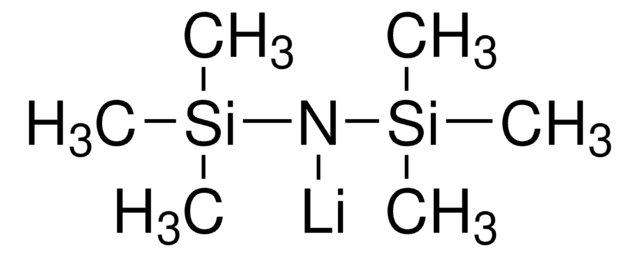450197
Lithium hydroxide monohydrate
99.995% trace metals basis
Sinónimos:
Lithium hydroxide hydrate
About This Item
Productos recomendados
Nivel de calidad
Ensayo
99.995% trace metals basis
Formulario
solid
impurezas
≤55.0 ppm Trace Metal Analysis
cadena SMILES
[Li+].O.[OH-]
InChI
1S/Li.2H2O/h;2*1H2/q+1;;/p-1
Clave InChI
GLXDVVHUTZTUQK-UHFFFAOYSA-M
¿Está buscando productos similares? Visita Guía de comparación de productos
Categorías relacionadas
Descripción general
Aplicación
Características y beneficios
- requirement of a small amount while using as a catalyst,
- short reaction times, and
- high product yields etc
- Low trace metals content ( < 55.0 ppm)
Palabra de señalización
Danger
Frases de peligro
Clasificaciones de peligro
Acute Tox. 4 Oral - Eye Dam. 1 - Skin Corr. 1B
Código de clase de almacenamiento
8A - Combustible corrosive hazardous materials
Clase de riesgo para el agua (WGK)
WGK 1
Punto de inflamabilidad (°F)
Not applicable
Punto de inflamabilidad (°C)
Not applicable
Equipo de protección personal
Eyeshields, Faceshields, Gloves, type P3 (EN 143) respirator cartridges
Elija entre una de las versiones más recientes:
¿Ya tiene este producto?
Encuentre la documentación para los productos que ha comprado recientemente en la Biblioteca de documentos.
Los clientes también vieron
Nuestro equipo de científicos tiene experiencia en todas las áreas de investigación: Ciencias de la vida, Ciencia de los materiales, Síntesis química, Cromatografía, Analítica y muchas otras.
Póngase en contacto con el Servicio técnico









